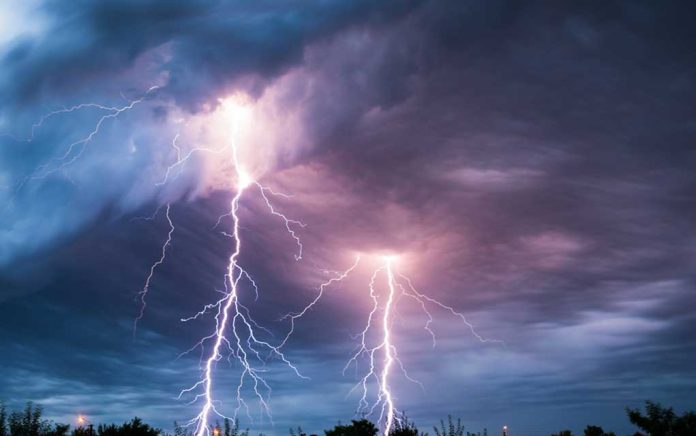
(TacticalNews.com) – The outdoors are a wonderful place full of adventure and breathtaking beauty, but we often forget that nature also packs a punch. Take, for instance, the electrical terror of the skies: lightning. One of Mother Nature’s truly spectacular displays, lightning is both awe-inspiring and potentially deadly.
To ensure you don’t get caught in the storm, both figuratively and literally, How To Survive has provided the following video on surviving lightning:
The first factor to understand about lightning is that there are multiple ways to be struck. The first is a direct strike, when the bolt comes from the heavens and hits you. The second, and far more common type, are ground currents. These occur when lightning strikes the ground and ripples outward. The third type is side flashes, when lightning hits an object and bounces off of it. A fourth and final type are called streamers, upward-moving bursts of energy that occur when lightning charges the atmosphere–including objects near the ground.
Lightning can occur up to ten miles away from a thunderstorm, which means the sky could be clear when it strikes. If the hair on your arms begins to rise, or you start to hear thunder, it’s a good sign that lightning is moving into the area.
At the first signs of lightning, it’s a good idea to head indoors. A car will work if you can’t get inside a home, but be sure the windows are up and you’re not touching anything metal once you’re inside. If lightning does strike the car, it will travel through the metal and into the ground, keeping you safe (though likely shaken up).
There are some places to avoid in a lightning storm, however, such as water, caves, and open areas — especially hills. Stay away from trees and telephone poles as well, since side flashes are common with these objects.
If you get stuck outdoors without shelter or a car, make yourself as small as possible. Crouch down, place your head between your knees and cover your ears with your hands. A lightning strike in close proximity to you can do serious damage to your hearing. If you are hit by a bolt in this position, it has a shorter distance to travel before entering the ground. This increases the odds that you will suffer minimal damage from the blast.
For more information on surviving nature’s fury, check out our article on terror twisters here.
Have you ever been caught out in a lightning storm? Do you know anyone who has ever been struck by lightning? Reply to your email and share your story, we would love to hear from you!
Copyright 2021, TacticalNews.com



















